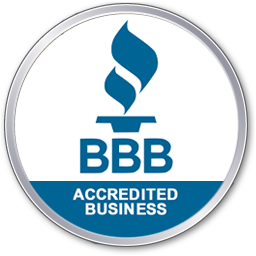If you grew up watching TV before streaming was a thing, anytime in the 2000s, you’ve likely seen a commercial about asbestos exposure. And if you ever caught one of those commercials, you may have asked yourself, “What is asbestos?” and “What is asbestos abatement?”
Asbestos was once a common building material due to its fire-resistant and insulating properties.
The removal of asbestos-containing materials, or asbestos abatement, was and is essential to prevent unnecessary exposure and maintain a healthy and safe living environment.
In this guide, we’ll provide a comprehensive overview of safe and effective asbestos abatement in Portland, OR, including what it is, the hazards it poses, and the steps involved in removing asbestos-containing materials.
What is Asbestos?
Asbestos is a mineral that occurs naturally. It’s commonly used in building materials across the country due to its fire-resistant and insulating properties.
Types of Asbestos and Where They Are Found
There are two mineral families of asbestos and six currently recognized individual types.
The two families are:
- Serpentine asbestos
- Amphibole asbestos
Serpentine asbestos is recognized by its sheets of crystals and curly fibers. The amphibole asbestos family differs in shape in that it contains needle-shaped fibers.
The six recognized types of asbestos are:
- Chrysotile
- Crocidolite
- Amosite
- Anthophyllite
- Tremolite
- Actinolite
Chrysotile
Chrysotile, or white asbestos, is the most common type of asbestos used in a wide range of products during the 20th century. Oftentimes, chrysotile contained small amounts of amphibole asbestos, which only served to increase its toxicity.
Some chrysotile-containing products found in buildings and homes include:
- Drywall
- Cement
- Roofing
- Vinyl tiles
- Insulation
- Fireproofing
- Adhesives
- Gaskets
Crocidolite
Crocidolite, or blue asbestos, was commonly used to insulate steam engines. However, crocidolite was also found to be used in cement, plastics, pipe insulation, and some spray-on coatings.
Amosite
Amosite, or brown asbestos, was the type of asbestos more commonly used in pipe insulation and cement sheets. It was also used for thermal insulation, insulating board, and ceiling tile products.
Anthophyllite
Anthophyllite is a type of asbestos that has a dull green, gray, or white color and was found as often a contaminant in talc, vermiculite and chrysotile. Unlike the other types of asbestos, anthophyllite had limited use for construction materials and insulation.
Anthophyllite asbestos can be found in:
- Cement products
- Insulation
- Roofing
- Rubber
Tremolite and Actinolite
The last two types of asbestos, tremolite and actinolite, had no significant commercial use. However, like anthophyllite, these two types of asbestos were found as contaminants in chrysotile, talc, and vermiculite.
Asbestos Abatement Process: Step-by-Step Guide
The asbestos abatement process involves several steps that must be followed to ensure safe and effective removal of asbestos-containing materials.
- Inspection. The first step in the asbestos abatement process is to inspect the building to identify asbestos-containing materials. A licensed asbestos inspector will take samples of building materials and send them to a laboratory for testing.
- Testing. The lab will then analyze the samples for any sign of asbestos. If asbestos is found, the inspector will create an abatement plan.
- Preparation. The work area is then prepared by sealing off the asbestos-containing area and posting warning signs. The abatement team will wear personal protective equipment (PPE), including respirators and disposable coveralls.
- Removal. The asbestos-containing materials will be removed using special tools and techniques to minimize the release of asbestos fibers. Many times this may involve wetting the materials to reduce dust and using negative air pressure to prevent the spread of asbestos fibers.
- Disposal. The asbestos-containing materials will be placed in sealed containers and disposed of per local, state, and federal regulations.
- Air monitoring. During the asbestos abatement process, air monitoring is conducted to ensure that the levels of asbestos fibers in the air are below acceptable limits.
- Clearance testing. Once the asbestos-containing materials have been removed, clearance testing will be conducted to ensure that the area is safe for re-occupation.
While this is a standard step-by-step guide to the asbestos abatement process, it’s important to note that the process may vary. The actual process will depend on specific circumstances,
including the size of the work area, the level of contamination, and the type of asbestos-containing materials.
Regardless, it’s essential to follow the proper procedures and regulations in order to ensure safe and effective asbestos abatement.
Asbestos Abatement Best Practices
When handling asbestos, following best practices is essential for safe and effective asbestos abatement. Some best practices to follow include the following:
- Using proper removal techniques. It’s important to use proper techniques for removing asbestos-containing materials to minimize the release of asbestos fibers into the air. This may involve wetting the materials to reduce dust and using negative air pressure to prevent the spread of asbestos fibers.
- Provide adequate ventilation. Proper ventilation is essential during the asbestos abatement process to ensure that asbestos fibers don’t accumulate in the air. Adequate ventilation may involve using fans, air filters, or other ventilation equipment.
- Using PPE. The abatement team should wear the proper PPE. This includes having respirators, gloves, and disposable coveralls on hand. The PPE should be properly fitted and regularly inspected to ensure that it’s in good condition.
- Follow proper disposal procedures. Asbestos-containing materials should never be thrown in the local dump. These materials must be disposed of in accordance with local, state, and federal regulations. The materials should be placed in sealed containers and labeled as containing asbestos.
- Follow DEQ guidelines. The Department of Environmental Quality (DEQ) has guidelines in place for asbestos abatement. Following these guidelines is important to ensure the safe and effective removal of asbestos-containing materials.
- Work with licensed professionals. Anytime you’re dealing with asbestos, it’s crucial to work with licensed asbestos abatement professionals. This is because these professionals have the necessary training and experience to handle asbestos abatement properly. They will ensure the asbestos abatement process is conducted safely and effectively, following all applicable regulations and guidelines. If these guidelines are not followed, individuals may face legal and financial consequences, as well as health risks.
Following these best practices ensures that asbestos abatement is handled safely and effectively, minimizing the risk of exposure to asbestos fibers.
It’s important to remember that asbestos abatement is a complex process that trained professionals should only perform. Attempting to remove asbestos-containing materials on your own can be dangerous and may result in exposure to asbestos fibers.
DIY Asbestos Abatement: What You Should Know
While it’s possible for homeowners to remove small amounts of asbestos-containing materials, it’s generally not recommended. Removing asbestos-containing materials on your own can expose you and others to asbestos fibers.
While some DIY options can be done safely and effectively, such as encapsulation techniques to seal off asbestos-containing materials without removing them, it’s important to follow guidelines for safe and effective asbestos abatement.
If you do decide to do it yourself, it’s essential to understand the risks and limitations of DIY asbestos abatement. Homeowners may not have the necessary equipment or training to handle asbestos abatement safely and effectively.
For larger asbestos abatement projects or when there is a significant amount of asbestos-containing materials, hiring a licensed and experienced asbestos abatement contractor is crucial.
Hiring a Licensed Asbestos Abatement Contractor
If you plan on removing asbestos from your home or building, it’s essential to hire a licensed and experienced asbestos abatement professional. Some tips for finding and choosing the right professional include:
- Asking for credentials. Make sure the asbestos abatement professional is fully licensed and has the necessary training and experience to handle asbestos.
- Ask for references. This helps ensure that they have a positive track record of safe and effective asbestos abatement.
- Get multiple quotes. Consider getting quotes from multiple companies or contractors to ensure you’re getting a fair price.
Asbestos Abatement Cost: What to Expect
Ultimately, the final cost of asbestos abatement can vary. It will depend on a variety of factors, such as:
- Work area size
- Amount of asbestos-containing material to be removed
- Job complexity
Asbestos Abatement Regulations and Legal Requirements
Handling asbestos isn’t like recycling pizza boxes and soda bottles. Asbestos abatement is regulated by local, state, and federal laws. The EPA and OSHA have regulations in place to protect workers and the public from exposure to asbestos fibers.
It’s important to follow these regulations and legal requirements when removing asbestos from a building, as failure to do so can result in fines and legal action.
The Importance of Safe and Effective Asbestos Abatement for Your Health and Home
Asbestos abatement is important for maintaining a healthy and safe living environment. The removal of asbestos-containing materials is essential to prevent exposure.
If you suspect that your home or building contains asbestos-containing materials, it’s important to have an inspection for asbestos done by a licensed asbestos inspector. If asbestos is found, hire a licensed asbestos abatement contractor to remove it safely and effectively.
Contact our licensed and experienced professionals at Alpha Environmental in the Portland, OR area if you’re in need of asbestos abatement services. We follow all applicable regulations and guidelines to ensure that the asbestos abatement process is done right.




